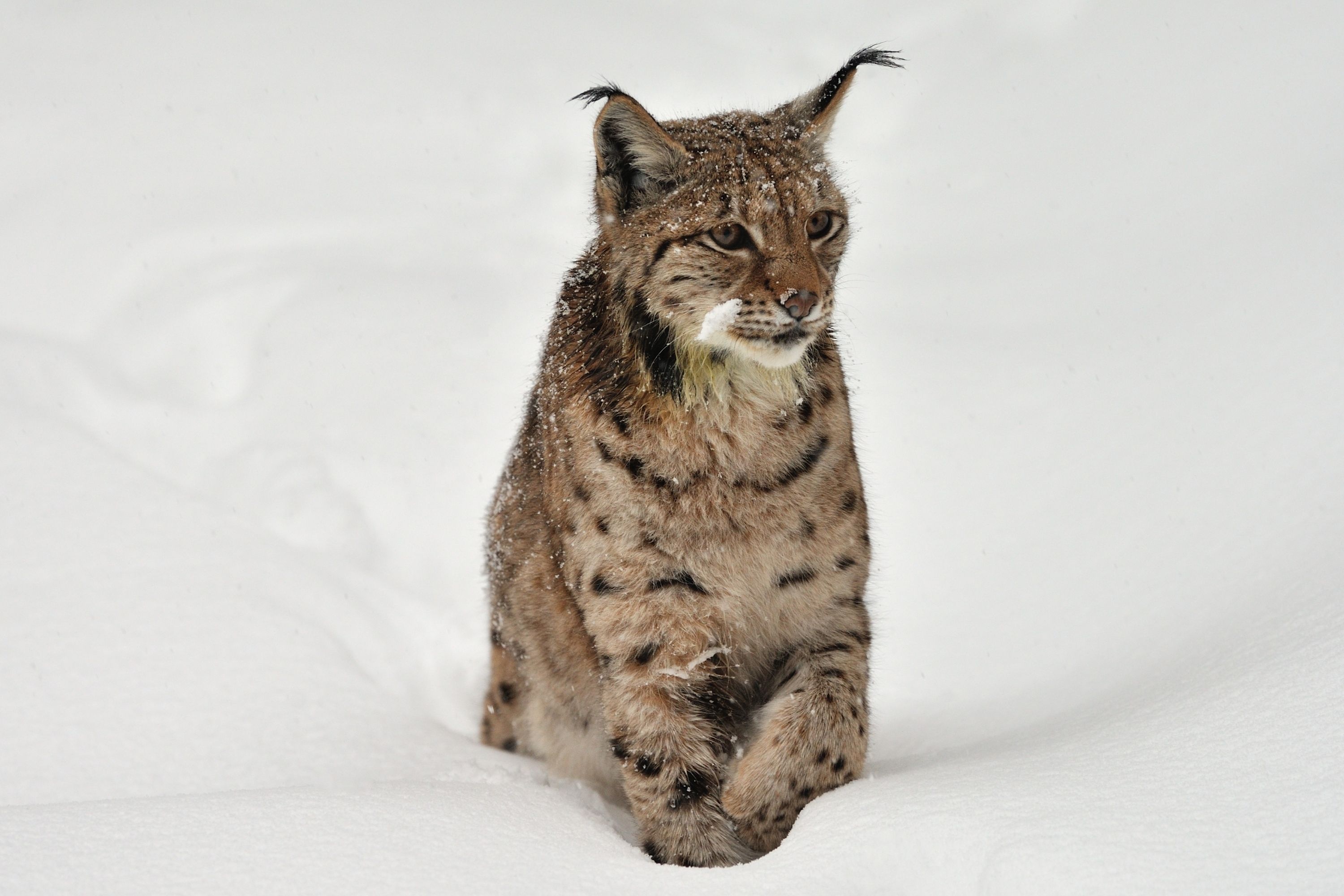Eurasian lynx
(Lynx lynx)

Description
The Eurasian lynx (Lynx lynx) is a medium-sized wild cat widely distributed from Northern, Central and Eastern Europe to Central Asia and Siberia, the Tibetan Plateau and the Himalayas. It inhabits temperate and boreal forests up to an elevation of 5,500 m (18,000 ft). Despite its wide distribution, it is threatened by habitat loss and fragmentation, poaching and depletion of prey. The Eurasian lynx inhabits rugged country providing plenty of hideouts and stalking opportunities. Depending on the locality, this may include rocky-steppe, mixed forest-steppe, boreal forest, and montane forest ecosystems. In the more mountainous parts of its range, Eurasian lynx descends to the lowlands in winter, following prey species and avoiding deep snow. Despite its adaptations for moving in snow, it finds loose, deep snow difficult to deal with and cannot survive in areas with snow depths exceeding 100 cm (39 in). It tends to be less common where the grey wolf (Canis lupus) is abundant, and wolves have been reported to attack and even eat lynx. The Eurasian lynx has a relatively short, reddish or brown coat that is marked with black spots; their number and pattern are highly variable. The underparts, neck and chin are whitish. The fur is more brightly coloured with more numerous spots in animals living at the southern end of its range. In winter, it is much thicker and varies from silver-grey to greyish brown. Some animals have dark brown stripes on the forehead and back. It has powerful, relatively long legs, with large webbed and furred paws that act like snowshoes. It also has a short "bobbed" tail with an all-black tip, black tufts of hair on its ears, and a long grey-and-white ruff. It is the largest of the four lynx species, ranging in body length from 76–106 cm (30–42 in) in males; 73–99 cm (29–39 in) in females; and standing 55–75 cm (22–30 in) at the shoulder. The tail is 11–24.5 cm (4.3–9.6 in) long, constituting a total length of up to 130 cm (51 in) in the largest males. Weights of both sexes in Russia range from 12 to 32 kg (26 to 71 lb), but more than 30 kg (66 lb) is attained very rarely and is possibly exaggerated. A Eurasian lynx from the Altai Mountains weighed 35 kg (77 lb). Those inhabiting Fennoscandia and westwards are considerably smaller, with a range of just 7–26 kg (15–57 lb), though individuals in the Carpathian Mountains may rival those in the Altai in size.
Taxonomic tree:







